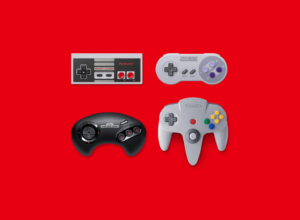“I heard a rumor that you can walk on top of Munchers if you put on Goomba’s Shoe!”
We could argue until the cows come home about which one is the best Super Mario Bros. game. The games are all so good in their own way that you could make a logical and well-reasoned argument for pretty much any of them being the best in some shape or form. (But most people are wrong. There is one right answer, for your information, and that’s Super Mario World. 2: Yoshi’s Island. No, I will not be accepting questions at this time.)
If you ask people which one is the most influential Mario game, however, most would say Super Mario 64, the game that saw the Mario Bros. transition from 2D to 3D. And, once again, almost everyone is wrong. The most influential Mario game is actually Super Mario Bros. 3, released for the Famicom in 1988. It would release for the NES later, in 1990 for the North American market and 1991 in Europe.
Why is Super Mario Bros. 3 so influential in the germination of the platform genre, and the Mario franchise as a whole? Just look at the sheer number of concepts – even things generally reserved for other genres – it introduces.
The obvious big addition is the world map, that not only served as a more pleasing visual transition between levels and worlds, but allowed the player a degree of choice in how they progressed. Found a level too hard? You might be able to work around it, or even sneak a shortcut. The world map also brought with it other non-level-based benefits, like single enemy encounters and bonus games to win prizes. Each world’s final boss airship can even just pick up and move, which can completely change the complexion of the map.
Super Mario Bros. 3 also goes hard on its burgeoning narrative style, an opportunity afforded to it by the more coherent storytelling on offer from its connected, map-driven environment. You’re not just storming Bowser’s castle – and killing him – eight times over at the end of a collection of similar-looking levels. Now there are intermediate fortresses, Bowser’s kids are creating terror from a fleet of airships, and magic (a series’ staple, further down the line) is being used to turn the rulers of the world into animals. Yes, The Princess Is Still In Another Castle™, but now she leaves Mario helpful notes and items – another go-to for the Mario games from this point on.
The other thing that works so well is the refreshed suite of power ups, that you can now hold in an inventory and choose to spend between, or going into, levels from the world map. Environmental items include a key to open gates and a hammer to smash rocks blocking your path. There’s even a cloud to float past a level you don’t fancy.
As for power-based items, the usual suspects are present, of course – hello, suspicious mushroom, fire flower, and invincibility star – but there’s a cornucopia of new options to beef up your Mario Brother, from the Frog Suit (faster swimming) to the Hammer Suit (lobbing hammers) to everyone’s favourite (flying).
The power of flight is conferred in its most basic form by the Super Leaf, which turns Mario into a flying Raccoon, or the more advanced Tanooki Suit, which, as the name suggests, turns Mario into a Tanooki. It has all the same powers as the Raccoon, but with the additional ability to turn to stone to avoid taking damage. The P-Wing, which can only be used from the world map, turns you into Raccoon Mario but with a permanently filled flight meter. (None of these flight-based powers come straight out of the animal kingdom, do they?)
And then there’s Kuribo’s Shoe, or Goomba’s Shoe, in the English translation. (“Goomba” is the translated form of the Japanese, “Kuribo”, in case you were wondering.)

Unlike other power ups, you can’t collect Kuribo’s Shoe from a question mark block, or win it from one of the games of skill or chance on Super Mario Bros. 3’s world map. To get Kuribo’s Shoe – a giant, clockwork green boot, ridden around by Goombas – you have to pry it from an enemy’s cold, dead, mushroomy hands. But if you jump on their head, the shoe dies with them; you need to knock an enemy out of the shoe by hitting them from underneath when they’re walking on a block. It’s a bit of a pain and, even then, you can’t hold one in your inventory, nor can you apply one before beginning a level. And unlike the suits and traditional powers, if you reach the end of a level wearing the big green shoe, you’ll lose it. And it’s only available in one single, solitary level.
After all that trouble, what does Kuribo’s Shoe do, when you get it? Well, it lets you hop around very slowly, like Frog Mario out of water with none of the swimming benefits. At first glance it seems a bit useless, but it does have one minor advantage: you can use it to stand on spikes and jump on spiky enemies that would normally damage Mario from underneath. That’s literally it, though. That’s all it does.
That image, of Mario, squatting in the big shoe, though? That’s iconic. For a power up that features such little prominence in the game it first appeared and then pretty much disappeared from the series altogether? It’s a testament to the comedic design of Kuribo’s Shoe that it wormed its way back into the franchise through Super Mario Maker and Paper Mario, even if it remains unloved in the mainline Mario games.
Read more from our Unsung Heroes of Gaming series.











